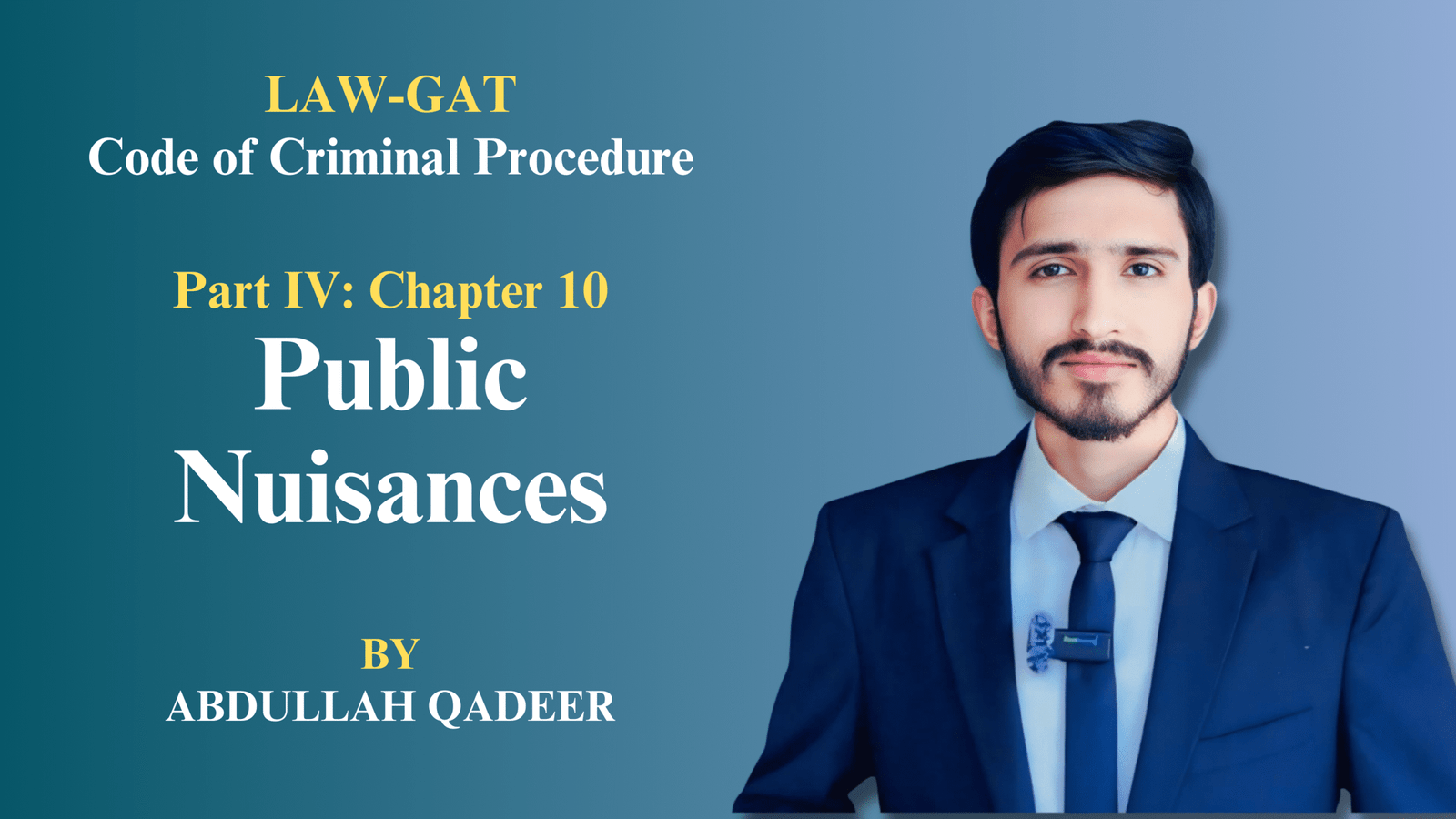Chapter 10 of the Code of Criminal Procedure, 1898, addresses public nuisances, which are actions or situations causing inconvenience or harm to the community or public at large. This chapter empowers magistrates to take prompt action to remove or prohibit nuisances, ensuring public health, safety, and convenience. It outlines procedures for issuing orders, handling objections, and enforcing compliance.
Important Multiple Choice Questions
Q1: Under which section of CrPC can a magistrate issue a conditional order for the removal of a public nuisance?
A) Section 132
B) Section 133
C) Section 134
D) Section 135
Answer: B) Section 133
Q2: How can a conditional order for removal of nuisance be served?
A) By public announcement only
B) By written notice or proclamation in public
C) By arresting the accused
D) By reporting to higher authorities
Answer: B) By written notice or proclamation in public
Q3: What is the next step if a person, to whom a conditional order is addressed under Section 133, fails to comply?
A) The magistrate can issue an injunction
B) The magistrate can impose a fine
C) The person must show cause or claim a jury under Section 135
D) The case is automatically dismissed
Answer: C) The person must show cause or claim a jury under Section 135
Q4: If the individual addressed by the conditional order under Section 133 appears and shows cause, which section outlines the procedure to be followed?
A) Section 136
B) Section 137
C) Section 138
D) Section 139
Answer: B) Section 137
Q5: In the context of public nuisances, what happens when a person claims a jury under Section 135?
A) The magistrate makes the order absolute
B) The order is canceled
C) A jury is constituted under Section 138 to determine the reasonableness of the order
D) The case is transferred to a higher court
Answer: C) A jury is constituted under Section 138 to determine the reasonableness of the order
Q6: Under Section 139-A, what happens if the existence of a public right is denied?
A) The magistrate must conduct an inquiry into the matter
B) The order is canceled immediately
C) The accused is fined without further inquiry
D) The case is transferred to a civil court
Answer: A) The magistrate must conduct an inquiry into the matter
Q7: What action can a magistrate take pending inquiry under Section 142?
A) Impose a monetary penalty
B) Issue an injunction to prevent continuation of the nuisance
C) File a report to a higher authority
D) Summon police assistance
Answer: B) Issue an injunction to prevent continuation of the nuisance
Q8: If an individual disobeys the magistrate’s order under Section 140, what can be the consequence?
A) The individual may be arrested and fined
B) The case is dismissed
C) The order becomes null and void
D) The matter is handed over to civil authorities
Answer: A) The individual may be arrested and fined
Q9: Which section allows a magistrate to prohibit the repetition or continuation of a public nuisance?
A) Section 141
B) Section 142
C) Section 143
D) Section 144
Answer: C) Section 143

